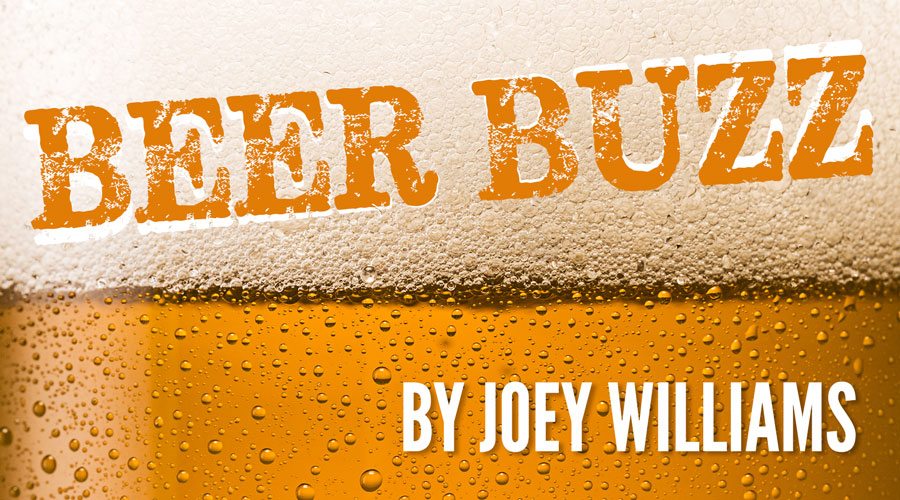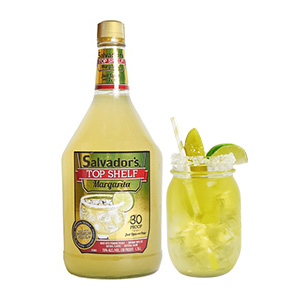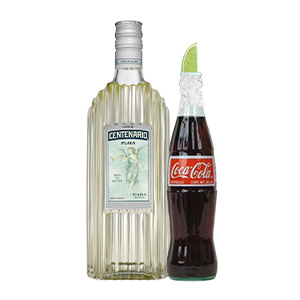
 How best to find a food pairing for a beer is a constant topic of conversation and debate among those at Spec’s, whether employee or guest, and all of us, myself included, would benefit more from basic information. There are a handful of “rules” I do my best to adhere to when recommending. Expanding on the introduction to perceptions and the science of flavor I explored in the last article (https://specsonline.com/blog/beer/minds-playing-tricks-on-you/), I’d like to share some of this information I’ve gathered on the topic of pairing. That said, even after getting through what I have in this article to share,
How best to find a food pairing for a beer is a constant topic of conversation and debate among those at Spec’s, whether employee or guest, and all of us, myself included, would benefit more from basic information. There are a handful of “rules” I do my best to adhere to when recommending. Expanding on the introduction to perceptions and the science of flavor I explored in the last article (https://specsonline.com/blog/beer/minds-playing-tricks-on-you/), I’d like to share some of this information I’ve gathered on the topic of pairing. That said, even after getting through what I have in this article to share,
pairing is still an experiment. There is no right or wrong answer.
The #1 rule of any pairing: match intensity. What I mean by intensity is the pronunciation of flavors. Subtle pan-seared white fish is not a bold enough flavor to pair with a Double IPA. The flavors might make sense, citrusy hops line up where a lemony sauce would, but the weight of the beer and its accompanying bitterness will dramatically overshadow the beauty of the fish. Now, finding that same citrusy hop character in a crisp, lean pilsner would be an excellent pairing for that same fish. It’s not always alcohol or color that indicate the intensity of a beer, but these are good guidelines when unsure.
Beyond intensity, it’s all about flavor. In terms of pairing flavors, you can go one of two ways: complement or contrast. Most pairings use a little of both when they work. Complementary, think of this as “harmony”, would be like using a bourbon barrel-aged beer for its vanilla character, from the barrel, alongside a chocolate cake. Vanilla is often used in baked goods to highlight chocolate flavors. The two flavors, and many additional ones, will mingle in your mouth. You could go the contrast route and use a roasted (bitter) stout alongside a slice of pecan pie. This pairing is a favorite of mine, and now a holiday tradition, that works because the coffee roasted bitterness of the beer keeps the sugary sweet pecan pie from crescendo-ing out of control. It’s very much like coffee with dessert, so it plays into a feeling of familiarity…but, it’s beer, so it’s better!
This contrast keeps both from overwhelming your tastebuds, because when you overload your palate, the result is sensory adaptation. I mentioned “the lupulin threshold shift” in the last article, which is the phenomenon of diminishing ability to perceive bitterness with the more hoppy/bitter beer that you consume. Short or long term, you can short-circuit your ability to sense the major tastes. This can be used to tame rough or aggressive flavors in one or the other element in a pairing. Have a beer that, on its own, is too sweet? Great Divide Peach Grand Cru is beautiful liquid and the first time I had it, I fell in love. So, imagine my surprise when I shared a second bottle later with family at a holiday dinner and it was much too sweet and not at all what I remembered. This was because the first time I had it with a breakfast that included delicious pastries, and then dinner was turkey with all the fixings. Alongside the sweet, my ability to perceive how rich Grand Cru was had diminished, but that was not the case at dinner.
The concept of complement and contrast is easier with an understanding of how tastes impact each other. Sweet, salty, sour, bitter and savory (umami) are not independent of one another. Those tastes in one item impact each other, not just in that item but in everything else you consume at that time.
It has been my experience that sweet and bitter are contrasting, and that can be beneficial to keep one another in check. Bitterness amplifies spice/heat. So an IPA, despite popular belief, is not ideal for pairing with spicy Indian food just because the beer gained popularity there. Instead, sweetness/richness helps to temper heat, similar to the way bitterness does to sweetness.
Salt/minerality does a number of magical things for food, beer and your perception of both. Salt tones down bitterness, which may explain why people put salt on/in their beer. Salt also tones down acidity, which is curious to me, because of salt’s presence in Gose, a popular kettle-sour of the moment revived from historic German brewing. And the reason may be that, even though it tempers the acidity, it enhances the other flavors and rounds things out.
Familiarity goes a long way when making a pairing work. If you can trick a person’s mind into recalling a positive memory or experience, that’s a win! I read something on beer and cheese pairings that talked of amber ales/lagers and cheddar being a pairing equivalent of grilled cheese. Most of us have warm childhood memories of fresh grilled cheese sandwiches. This trickery is where I find the most fun and satisfaction in pairings.
So, it’s here where I introduce to you my “muse”…Tequila shots and sour beers! I had an epiphany months ago, while enjoying a Jolly Pumpkin Oro de Calabaza, that the acidity and minerality of what I was drinking “should” work well in place of the usual salt and lime accompaniment of a tequila shot. I enjoy both of these things and it brings an element of familiarity.
Enough has been written by individuals more intelligent and better suited to cover the topic of beer and food pairings, so I wanted to take a different approach to the concept of “Beer & X” pairings. So, follow me down the unexpected rabbit hole of “The Boilermaker”. For the small handful of you that may not know what a boilermaker is, it is a shot of liquor, usually cheap whiskey, and a beer. It’s usually associated with the working class as an after work drink. Beer is THE “Everyman” beverage, and an accompanying shot
of something just sounds like a great time! So, let’s see if we can’t take that “every man” and turn it up.
My approach to consuming this combination is to take the whole shot and then chase it with some of the beer, leaving the rest of the beer to be enjoyed at a normal pace while relaxing. The spirit often coats the tongue enough to be incorporated into your next few drinks of beer. Some approach the two like a “drop/bomb shot” and drop the shot into the beer, then drink. You can also sip back and forth between the two.
The biggest challenge to this incredibly enjoyable undertaking is that #1 rule of pairing I mentioned before. Intensity? You want a 6% beer to match up to a 40% spirit and have anything to offer afterwards? This sounds ridiculous. But, who am I to ever avoid the opportunity to be ridiculous, especially with beer!
So, matching intensity? My assumption was that lighter beers will have little, if anything, to offer the pairing beyond being a chaser to the alcohol. In testing my theory, I have confirmed that something strongly flavored, like barrel-strength bourbon, renders something light, like an American lager nothing more than cold bubbles for the remainder of that beer. I don’t dislike cold bubbles, but I’d rather the beer retains some of its enjoyable qualities, beyond refreshment.
Back to the idea of “Tequila shots and sour beers”! I’ve tested this a good amount since then and can confirm that it works as hoped…most of the time. I have found success with lighter colored sours (goldens/blondes) with a blanco tequila. When it does work the beer works just like a lime and salt chaser, tempering the “green”/vegetal character of the tequila. With that Jolly Pumpkin Oro de Calabaza, this pairing softens the tequila and leaves the beer all florals and beauty. Intensity here has to do with acidity: if the beer only has a mild tartness, it will be steam-rolled by the spirit. It also helps if the beer has more to offer than just acidity.
Barrel-aged tequilas, reposados mostly, present some wood character that present a challenge for many light colored sours. I did have mind-blowing success with a sour red (Rodenbach Grand Cru) and a reposado (Siembra Azul). The two barrels matched and the expected “green”/vegetal contrast amplified the red fruit of the Rodenbach into an almost jammy, acidic beauty.
Outside of my obsession with “Tequila Shots and Sour Beers”, I have found success with an amber lager (Live Oak Big Bark Amber) and mezcal (Del Maguey Vida). This may have been the first beer-&-a-shot pairing with which oI had success, along with my very good friend, Linda Salinas. Linda is passionate about agave spirits and was sharing mezcal with me at the time. Mezcal is such a bold, pronounced and aggressive spirit that I couldn’t believe this average strength amber lager had anything left to offer. The lightly sweet, toasty malt carried the smoke of the mezcal and embraced that “green”/vegetal character like an extra dose of hops. It was very much an improvised cocktail mixed in the mouth. I enjoyed it so much that it is on my list as the next of these pairings to explore.
Another idea is a return to the “classic” whiskey and beer, but in a way that brings familiarity into play. I found success using a Rye IPA alongside a Rye whiskey, because citrusy, herbal and bitter hops offer suggestions of an Old Fashioned cocktail.
This is my struggle…I know enough to be extremely curious, but not enough to really know anything. So, I will continue to learn and share here what I find, and enjoy every moment of it! What I hope for is that you do the same and share with me in our store, on Twitter or via email. Questions, successes, failures, thoughts and comments all welcome! Whether you’re pairing with food, liquor or a cigar, I’d love to hear about it. I’m having a blast with this! Just keep in mind, even the best pairings are better with good company.







